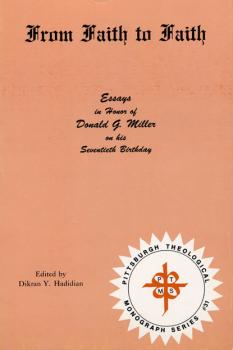ТОП просматриваемых книг сайта:
Группа авторов
Список книг автора Группа авторовАннотация
The recommendations summarise the state of the art. Their aim is the proper exploitation of the ground for geothermal purposes without adversely affecting the ground or the groundwater on the one hand and the operation of the system and nearby buildings on the other. The recommendations should be used during consulting, design, installation and operation in order to achieve optimum and sustainable use of the ground at a specific location. Authorities responsible for supervising and approving projects can use the recommendations as a guide when taking decisions and making stipulations. The Geothermal Energy Study Group was set up in Bochum in 2004 and became the joint DGGV/DGGT study group in 2007. Some 20 specialists from universities, authorities and engineering consultants are active in the group and meet two or three times a year.
Аннотация
This book introduces the fundamental design concepts of Eurocode 3 for steel structures in building construction, and their practical application. Following a discussion of the basis of design, above all the principles of the limit state approach, the material standards and their use are detailed. The fundamentals of structural analysis and modeling are presented, followed by the design criteria and approaches for various types of structural members. The following chapters expand on the principles and applications of elastic and plastic design, each exemplified by the step-by-step design calculation of a braced steel-framed building and an industrial building, respectively. Besides providing the necessary theoretical concepts for a good understanding, this manual intends to be a supporting tool for practicing engineers. To that end, numerous worked examples are provided throughout the book, concerning the analysis of steel structures and the design of elements under several types of actions. These examples facilitate the application of Eurocode regulations in practice. The second edition contains more worked examples and extended explications on issues like torsion.
Аннотация
Edited by major contributors to the field, this text summarizes current or newly emerging pulsed laser deposition application areas. It spans the field of optical devices, electronic materials, sensors and actuators, biomaterials, and organic polymers. Every scientist, technologist and development engineer who has a need to grow and pattern, to apply and use thin film materials will regard this book as a must-have resource.
Аннотация
Population ecologists study how births and deaths affect the dynamics of populations and communities, while ecosystem ecologists study how species control the flux of energy and materials through food webs and ecosystems. Although all these processes occur simultaneously in nature, the mathematical frameworks bridging the two disciplines have developed independently. Consequently, this independent development of theory has impeded the cross-fertilization of population and ecosystem ecology. Using recent developments from dynamical systems theory, this advanced undergraduate/graduate level textbook shows how to bridge the two disciplines seamlessly. The book shows how bifurcations between the solutions of models can help understand regime shifts in natural populations and ecosystems once thresholds in rates of births, deaths, consumption, competition, nutrient inputs, and decay are crossed. Mathematical Ecology is essential reading for students of ecology who have had a first course in calculus and linear algebra or students in mathematics wishing to learn how dynamical systems theory can be applied to ecological problems.
Аннотация
A comprehensive introduction to the burgeoning field of photonics The field of photonics is finding increasing applications across a broad range of industries. While many other books provide an overview of the subject, Fundamentals of Light Sources and Lasers closes a clear gap in the current literature by concentrating on the principles of laser operation as well as providing coverage of important concepts necessary to fully understand the principles involved. The scope of the book includes everything a professional needs to get up to speed in the field, as well as all the material necessary to serve as an excellent introductory laser course for students. Ideal for self-study as well as structured coursework, the book offers thorough coverage of: * The nature of light and atomic emission * Basic quantum mechanics and laser processes * Cavity optics, fast-pulse production, and nonlinear optical phenomena * Laser technology, including visible gas lasers, UV gas lasers, infrared gas lasers, solid-state lasers, semiconductor lasers and tunable dye lasers Extensive real-world case studies are included to help readers appreciate the practical applications of the material covered. *An Instructor's Manual presenting detailed solutions to all the problems in the book is available from the Wiley editorial department.
Аннотация
The leading guide to real-time systems design-revised and updated This third edition of Phillip Laplante's bestselling, practical guide to building real-time systems maintains its predecessors' unique holistic, systems-based approach devised to help engineers write problem-solving software. Dr. Laplante incorporates a survey of related technologies and their histories, complete with time-saving practical tips, hands-on instructions, C code, and insights into decreasing ramp-up times. Real-Time Systems Design and Analysis, Third Edition is essential for students and practicing software engineers who want improved designs, faster computation, and ultimate cost savings. Chapters discuss hardware considerations and software requirements, software systems design, the software production process, performance estimation and optimization, and engineering considerations. This new edition has been revised to include: * Up-to-date information on object-oriented technologies for real-time including object-oriented analysis, design, and languages such as Java, C++, and C# * Coverage of significant developments in the field, such as: New life-cycle methodologies and advanced programming practices for real-time, including Agile methodologies Analysis techniques for commercial real-time operating system technology Hardware advances, including field-programmable gate arrays and memory technology * Deeper coverage of: Scheduling and rate-monotonic theories Synchronization and communication techniques Software testing and metrics Real-Time Systems Design and Analysis, Third Edition remains an unmatched resource for students and practicing software engineers who want improved designs, faster computation, and ultimate cost savings.










